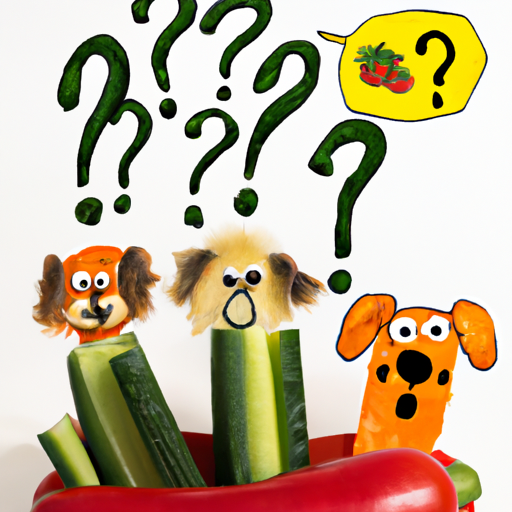You, as a caring and responsible pet owner, are always seeking the best for your furry friend. You may have noticed the growing trend of pet parents incorporating fruits and vegetables into their dogs’ diets. You’re probably wondering, “Which vegetables can I safely feed my dog raw?” Well, you’ve come to the right place. Let’s dive in and explore together the world of raw veggies for canines.
The Benefits of Vegetables for Dogs
Vegetables are packed with essential vitamins, minerals, and fiber that could greatly benefit your dog’s health. They can aid digestion, boost immunity, and promote healthy skin and coat. But before you start tossing veggies into your dog’s bowl, it’s important to know which ones are safe and beneficial.
Safe Raw Vegetables for Dogs
-
Carrots:
Crunchy and sweet, carrots are an excellent source of vitamin A, potassium, and fiber. They are low in calories and can make a great low-fat snack for overweight dogs. -
Cucumbers:
Hydrating and refreshing, cucumbers are rich in vitamins K, C, and B1. They are also low in calories and fats, making them a good choice for overweight dogs. -
Bell Peppers:
Packed with vitamins A, E, and C, bell peppers are a great antioxidant source. They can be served raw, but some dogs might prefer them slightly cooked to soften their texture. -
Celery:
Celery is high in vitamins A, B, and C and nutrients like potassium, folate, and fiber. It helps freshen your dog’s breath and is low in calories. -
Broccoli:
Broccoli is rich in vitamins A, C, and K, fiber, and calcium. However, it should be given in moderation due to its potential to cause gastric irritation in some dogs.
| Vegetable | Benefit |
|---|---|
| Carrots | Low in calories, High in vitamin A |
| Cucumbers | Hydrating, High in vitamin K |
| Bell Peppers | Rich in antioxidants, High in vitamin C |
| Celery | Freshens breath, High in vitamins A, B, and C |
| Broccoli | Rich in fiber, High in vitamin K |
Vegetables to Avoid
While many vegetables are safe for dogs to consume, some can be harmful. Avoid feeding your dog the following raw veggies:
- Onions and garlic
- Mushrooms
- Avocado
- Tomatoes (particularly the green parts)
- Rhubarb
How to Introduce Raw Vegetables to Your Dog’s Diet
Start by introducing one vegetable at a time and monitor your dog’s reaction. Mix a small amount with their regular food. Remember, veggies should only make up about 10% of your dog’s diet and should not replace their regular meals.
FAQ
Q: Can dogs eat all vegetables?
A: No, some vegetables can be toxic to dogs such as onions, garlic, and some mushrooms.
Q: Can vegetables replace a dog’s regular diet?
A: No, vegetables should only supplement a balanced diet. They should not exceed 10% of your dog’s daily intake.
Q: Do all dogs like vegetables?
A: Every dog is different. Some may enjoy vegetables while others may not. Always introduce new foods gradually and observe your dog’s reaction.
Q: Should vegetables be cooked or served raw?
A: Both can be beneficial. However, this article focuses on raw vegetables. Some vegetables may be easier for dogs to digest when cooked.
By maintaining a balanced diet and incorporating safe, raw vegetables, you can help ensure that your furry friend lives a long and healthy life. Remember, when in doubt, consult your vet before introducing new foods into your dog’s diet.



